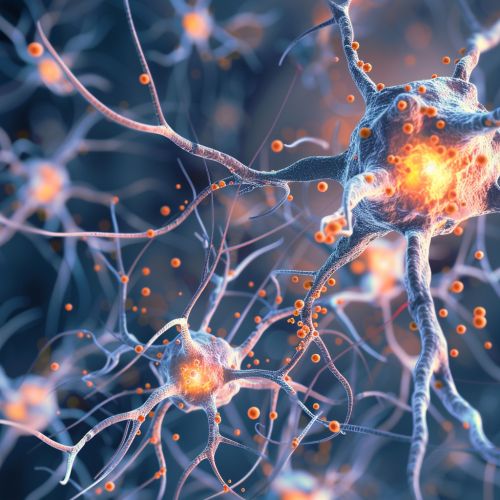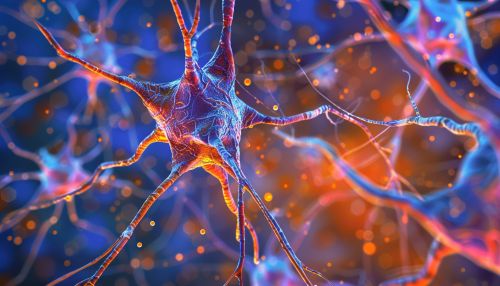Neurochemical
Introduction
Neurochemistry is the specific study of neurochemicals, which include neurotransmitters and other molecules such as neuro-active drugs that influence neuron function. This branch of neuroscience examines how these neurochemicals influence the network of neural operation. This field within neuroscience is in close collaboration with fields such as psychopharmacology, neurobiology, and psychological science to analyze the biological function of neurons and neural networks.


Neurochemicals
Neurochemicals are organic molecules that participate in neural activity. The brain uses over a hundred different chemicals to carry out its functions. These chemicals, known as neurotransmitters, are responsible for transmitting signals from a neuron to a target cell across a synapse.
Neurotransmitters
Neurotransmitters are endogenous chemicals that transmit signals across a synapse from one neuron (nerve cell) to another 'target' neuron, muscle cell, or gland cell. Neurotransmitters are packaged into synaptic vesicles that cluster beneath the membrane on the presynaptic side of a synapse, and are released into the synaptic cleft, where they bind to receptors in the membrane on the postsynaptic side of the synapse. Release of neurotransmitters usually follows arrival of an action potential at the synapse, but may also follow graded electrical potentials.
Classification of Neurotransmitters
Neurotransmitters can be classified into three major types: Amino acids, Peptides, and Monoamines.
Amino acids include glutamate, the most abundant neurotransmitter, which is excitatory at most synapses, and GABA, the most abundant fast inhibitory neurotransmitter in the mammalian nervous system.
Peptides include substances such as endorphins and enkephalins, which are involved in pain reduction and sedation.
Monoamines include dopamine, which is involved in reward and motivation, norepinephrine, which is involved in arousal and alertness, and serotonin, which is involved in regulation of mood, appetite, and sleep.
Neuroactive Drugs
Neuroactive drugs are chemicals that influence the function of the nervous system. These drugs can originate from natural sources such as plants and animals, or can be synthesized in a laboratory. Neuroactive drugs include both legal and illegal substances, and can have a wide range of effects on the nervous system.
Classification of Neuroactive Drugs
Neuroactive drugs can be classified into several categories based on their effects on the nervous system. These categories include stimulants, depressants, hallucinogens, and analgesics.
Stimulants, such as caffeine and amphetamine, increase the activity of the nervous system, leading to increased alertness and energy.
Depressants, such as alcohol and benzodiazepines, decrease the activity of the nervous system, leading to relaxation and sedation.
Hallucinogens, such as LSD and psilocybin, alter perception and can cause hallucinations.
Analgesics, such as morphine and aspirin, reduce pain.
Neurochemical Interactions
The interactions between different neurochemicals can influence the function of the nervous system in complex ways. For example, the balance between excitatory and inhibitory neurotransmitters can influence the overall activity of the brain and can contribute to disorders such as epilepsy and anxiety.
Neurochemical Disorders
Neurochemical disorders are conditions that are caused by imbalances in neurochemicals in the brain. These disorders can include conditions such as depression, schizophrenia, Parkinson's disease, and many others.
Depression is thought to be caused by imbalances in several neurotransmitters, particularly serotonin, norepinephrine, and dopamine.
Schizophrenia is associated with imbalances in dopamine and glutamate.
Parkinson's disease is associated with a loss of dopamine-producing neurons in the brain.
